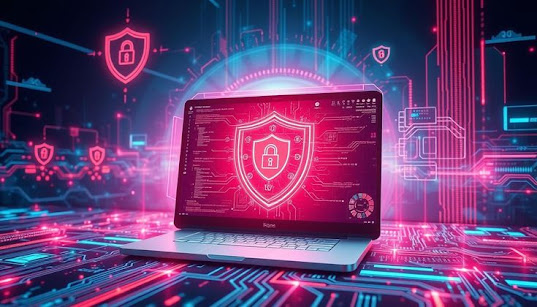Cyber Hygiene for Smart Homes: Securing IoT Devices in 2025
Cyber Hygiene for Smart Homes: Securing IoT Devices in 2025
In 2025, smart homes are no longer rare—they’re the norm. From smart lights to connected refrigerators, the Internet of Things (IoT) now plays a major role in our homes. But while these devices bring convenience, they also open doors for cybercriminals. Ignoring their security can turn your dream home into a hacker’s playground.
Why Cyber Hygiene Matters in 2025
Today’s smart homes are filled with devices that constantly communicate—both with each other and with cloud services. Whether it’s your thermostat learning your habits or your baby monitor streaming video, each device is a potential entry point for hackers if left unprotected.
Cyber hygiene is like personal hygiene—it’s about regular, proactive habits that protect your digital environment. Neglecting these basics can expose your data, your privacy, and even your physical safety.
Start with Password Hygiene
The biggest mistake users still make in 2025 is using default credentials. Devices often ship with usernames like “admin” and passwords like “1234.” Hackers scan the internet 24/7 looking for such unsecured devices. Always change your passwords to strong, unique combinations for every device.
Consider using a password manager to generate and store your passwords. Also, turn on two-factor authentication (2FA) wherever possible—it adds a layer of security even if someone steals your password.
Keep Firmware Updated
One of the easiest ways to stay secure is by keeping your smart devices updated. Manufacturers regularly release patches to fix vulnerabilities. If your device is outdated, it’s like an unlocked door for hackers. Set devices to auto-update, or manually check for firmware updates once a month.
Secure Your WiFi Network
Your home network is the foundation of all connectivity. Make sure it’s protected with WPA3 encryption and a strong password. Avoid using personal info in your WiFi name (SSID).
Create a separate guest network for your IoT devices. This way, if one device gets compromised, it won’t infect your laptops or phones.
Monitor and Segment Your Network
Use routers or security appliances that support network segmentation. Place your smart home devices on one VLAN or network, and your personal computing devices on another. This limits the damage hackers can do if they break into a single device.
Consider using tools like firewalls or IDS (Intrusion Detection Systems) to monitor unusual activity. In 2025, consumer-level versions are easier than ever to install and manage.
Voice Assistants: Convenience or Threat?
Devices like Alexa or Google Assistant are always listening for wake words. That means they’re always “on.” Check your privacy settings and turn off any unnecessary features.
Regularly delete voice recordings and unlink third-party apps you don’t use. Also, never share sensitive data via voice commands.
Physical Security Still Matters
Don’t forget that not all threats are digital. If someone gains physical access to your smart hub or router, they can easily reset or reprogram your devices. Place your hardware in secure spots and consider locking down USB ports.
Beware of “Zombie” Devices
Devices you no longer use might still be connected to your network. These forgotten gadgets may never get updated and could serve as hidden vulnerabilities. Do a smart device audit every 3 months and remove unused ones.
Smart TVs, Plugs, and Cameras
It’s not just your computer or phone—TVs, light bulbs, plugs, cameras, and even smart beds can be targets. Disable microphones and cover cameras if they’re not in use. Also, be cautious about connecting your TV to unknown apps or services.
Teach Your Family Cyber Awareness
Your cybersecurity is only as strong as your weakest user. Children, elders, and guests should be aware of basic cyber hygiene. Teach them to avoid suspicious links, unsecured devices, and unknown USBs.
Future Trends and Responsibilities
As homes get smarter, we’re going to see things like fridges that order groceries automatically, blinds that adjust based on your mood, and AI that learns your behavior. This increased automation means more data, more access points—and more risk.
The solution isn’t to avoid smart devices—it’s to use them responsibly. Cyber hygiene is not just a technical routine. It’s a mindset. The better your habits, the safer your home becomes.
Final Thoughts
In 2025, a smart home should also be a secure home. And while technology continues to evolve rapidly, the basics of cyber hygiene remain the same: strong passwords, regular updates, network protection, and user awareness.
Cybersecurity doesn’t have to be complicated. It just needs to be consistent. You don’t need to be a tech wizard to keep your home safe—you just need to stay informed and act proactively. In a connected world, digital safety is physical safety.




Comments
Post a Comment